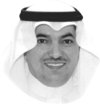Pezeshkian’s new government shows unity is a priority

https://arab.news/nswg6
Masoud Pezeshkian’s election as the new president of Iran marks a significant shift in the country’s political landscape. His rise to power happened after the sudden death of former President Ebrahim Raisi in a helicopter crash in May, which created an opening for a more moderate Iranian president at a time when the country faced a trio of crises: social, economic and security/regional.
Pezeshkian, a former health minister and heart surgeon, is known for his moderate views within Iran’s complex political system. He has promised to focus on economic reforms, reduce international tensions and improve relations with Western nations. His administration is also expected to ease the enforcement of strict social policies, such as the mandatory hijab law, which has been a source of significant unrest in recent years.
Nevertheless, former Foreign Minister Javad Zarif last week resigned as vice president for strategic affairs after only 11 days in office, citing a failure to meet expectations and disagreements over Cabinet inclusivity. According to his official justification, he was not satisfied with the level of “representation of women, youth and ethnicities, and the expert opinion of the committees.”
Zarif has voiced criticisms of Pezeshkian’s new Cabinet, which has significant implications for Iran’s political dynamics. Zarif, a key figure in negotiating the 2015 nuclear deal, has expressed concerns that the new Cabinet might not be capable of handling the delicate balance of domestic reform and international diplomacy that Pezeshkian has promised.
His criticisms stem from the composition of the Cabinet, which includes figures who are either inexperienced or too closely aligned with hard-line elements within the Iranian establishment. This raises doubts about the administration’s ability to implement meaningful reforms or effectively engage with the West to revive the nuclear deal. Zarif’s comments reflect broader apprehension among reformists and moderates, who fear that the new government may not live up to its promises of change and may struggle with the internal pressures from conservative factions.
This criticism could weaken Pezeshkian’s standing, both domestically and internationally, as it underscores potential internal divisions and the challenge of fulfilling campaign promises in the face of a complex, entrenched political system and a delicate internal equilibrium between different security organizations.
At the same time, last month’s killing of Ismail Haniyeh, a prominent leader of Hamas, plunged Iran’s newly inaugurated president into a severe early crisis. For Pezeshkian, Haniyeh’s killing presents multiple challenges. Firstly, the new president is facing pressure from hard-liners. Indeed, the hard-line factions within Iran are demanding a strong retaliatory response against Israel. This is in line with Supreme Leader Ali Khamenei’s rhetoric. He said last week that any non-tactical retreat on any front — military, political or economic — invites a “divine wrath.”
These factions may see Pezeshkian’s moderate stance and his potential willingness to engage diplomatically with the West as a weakness. The president, therefore, faces the difficult task of balancing these domestic pressures with the broader goals of reducing Iran’s international isolation and easing economic sanctions.
Pezeshkian’s positions on regional crises will be closely watched by his allies and adversaries alike. Even though he is not the main decision-maker regarding a possible Iranian military response, he faces a dilemma. A measured approach might help him maintain diplomatic channels with the West, but it could alienate his domestic base and key allies like Hezbollah. On the other hand, a more aggressive response could derail his reformist agenda and provoke further international sanctions.
This crisis underscores the complexities of leading Iran, where domestic and international pressures are deeply intertwined and any significant event in the region can rapidly destabilize the political landscape. This is why Pezeshkian proposed a Cabinet line-up that is inclusive of all security organizations and political factions. In doing so, he was sending a message to the hard-liners that he is different from Mohammed Khatami and Hassan Rouhani.
Zarif has voiced criticisms of the new Cabinet, which has significant implications for Iran’s political dynamics.
Dr. Mohammed Al-Sulami
Key ministers — including foreign, intelligence and defense — are selected under the supervision of Khamenei. According to conservative journalist Mohammed Reza Mohajeri, the Cabinet was supposed to become “like a third Cabinet for (former moderate president) Rouhani. They were carried away and they formed President Raisi’s second Cabinet.”
Despite the openness of the new president toward hard-liners, parliamentary scrutiny will focus primarily on the reformist ministers proposed by Pezeshkian. Reformists like Mohammed Reza Zafarghandi as minister of health and Ahmad Maydari as minister of labor, as well as female nominee Farzaneh Sadegh as minister of housing and urban planning, are likely to face the strongest opposition in the Iranian parliament.
This show of unity between the reformist and conservative factions is designed to overcome internal divisions inside the system. It remains to be seen if the parliament can allow the new president to deliver on his promise of forming a government of “national unity.”
- Dr. Mohammed Al-Sulami is the founder and president of the International Institute for Iranian Studies (Rasanah). X: @mohalsulami










































